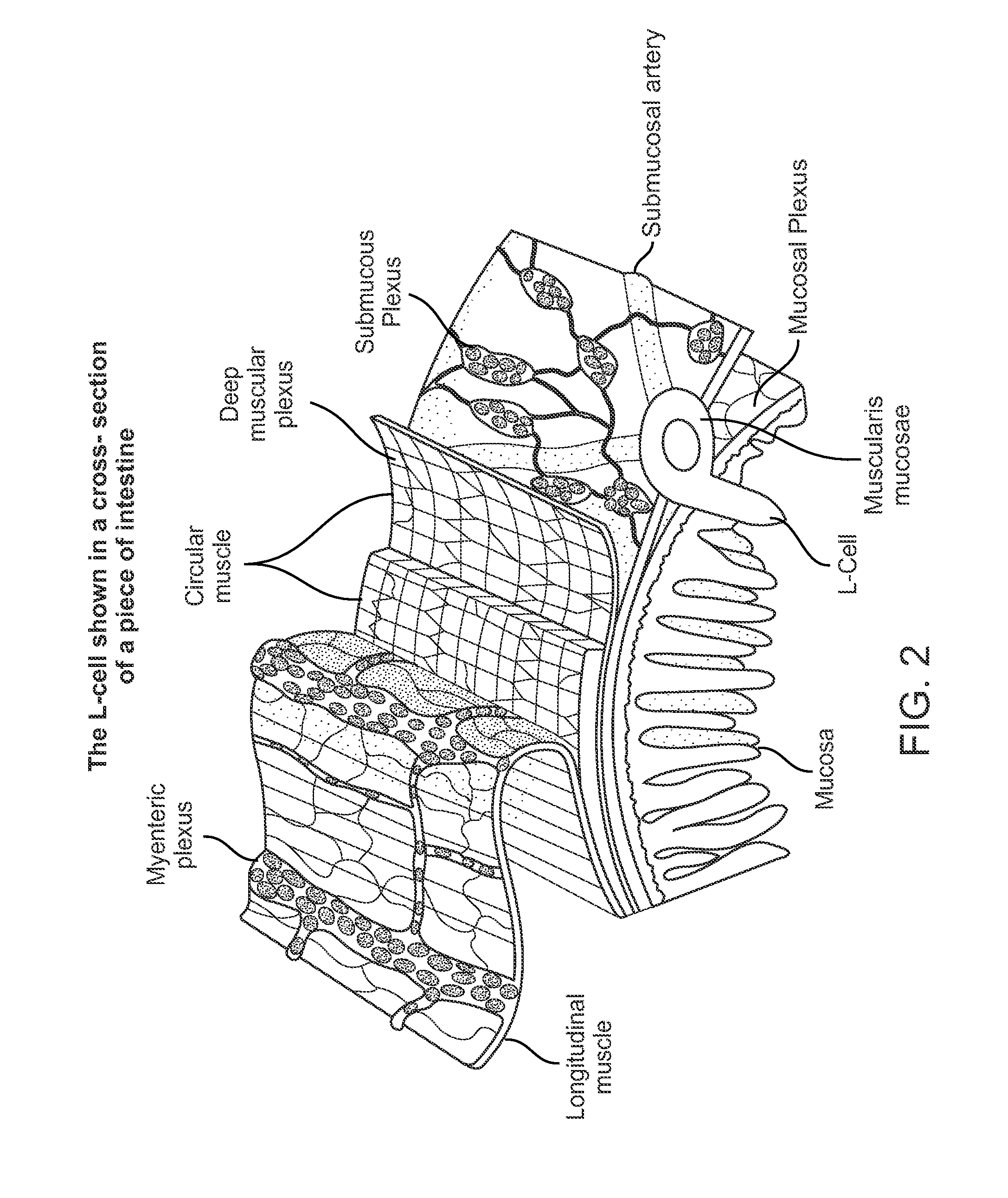Swallowable Capsule and Method for Stimulating Incretin Production Within the Intestinal Tract
- Summary
- Abstract
- Description
- Claims
- Application Information
AI Technical Summary
Benefits of technology
Problems solved by technology
Method used
Image
Examples
example 1
Electrical Stimulation of In Vitro GLP-1 Release
[0051]Culture dishes were coated on ice with Matrigel by adding 50 ul / cm2 (190 ul in 24 well dishes). The dishes were warmed at 37° C. for 30 minutes, and then seeded with 260,000 cells using high glucose DMEM supplemented with 2 mM glutamine (0.146 g per 500 ml), 10% fetal bovine serum (FBS), and 1% Pen Strep. After 48 hours there were 1.5-2 million cells per well. The initial cells were NCI-H716 cells, which are a human poorly differentiated colorectal adenocarcinoma. These cells grew undifferentiated in suspension. However, after the 48 hour treatment described above, the cells differentiated into GLP-1 secreting cells. These GLP-1-secreting cells were used for the following experiment.
[0052]For the experiment, the cell medium was replaced with HBSS supplemented with 0.5% FBS and optionally one of the following test agents:[0053]1. PMA (phorbol-12-myristate-13-acetate) (stock solution of 1 mg in 1.6 ml DMSO=1 mM; add 1 ul per ml of ...
PUM
| Property | Measurement | Unit |
|---|---|---|
| Length | aaaaa | aaaaa |
| Length | aaaaa | aaaaa |
| Length | aaaaa | aaaaa |
Abstract
Description
Claims
Application Information
 Login to View More
Login to View More - R&D
- Intellectual Property
- Life Sciences
- Materials
- Tech Scout
- Unparalleled Data Quality
- Higher Quality Content
- 60% Fewer Hallucinations
Browse by: Latest US Patents, China's latest patents, Technical Efficacy Thesaurus, Application Domain, Technology Topic, Popular Technical Reports.
© 2025 PatSnap. All rights reserved.Legal|Privacy policy|Modern Slavery Act Transparency Statement|Sitemap|About US| Contact US: help@patsnap.com



